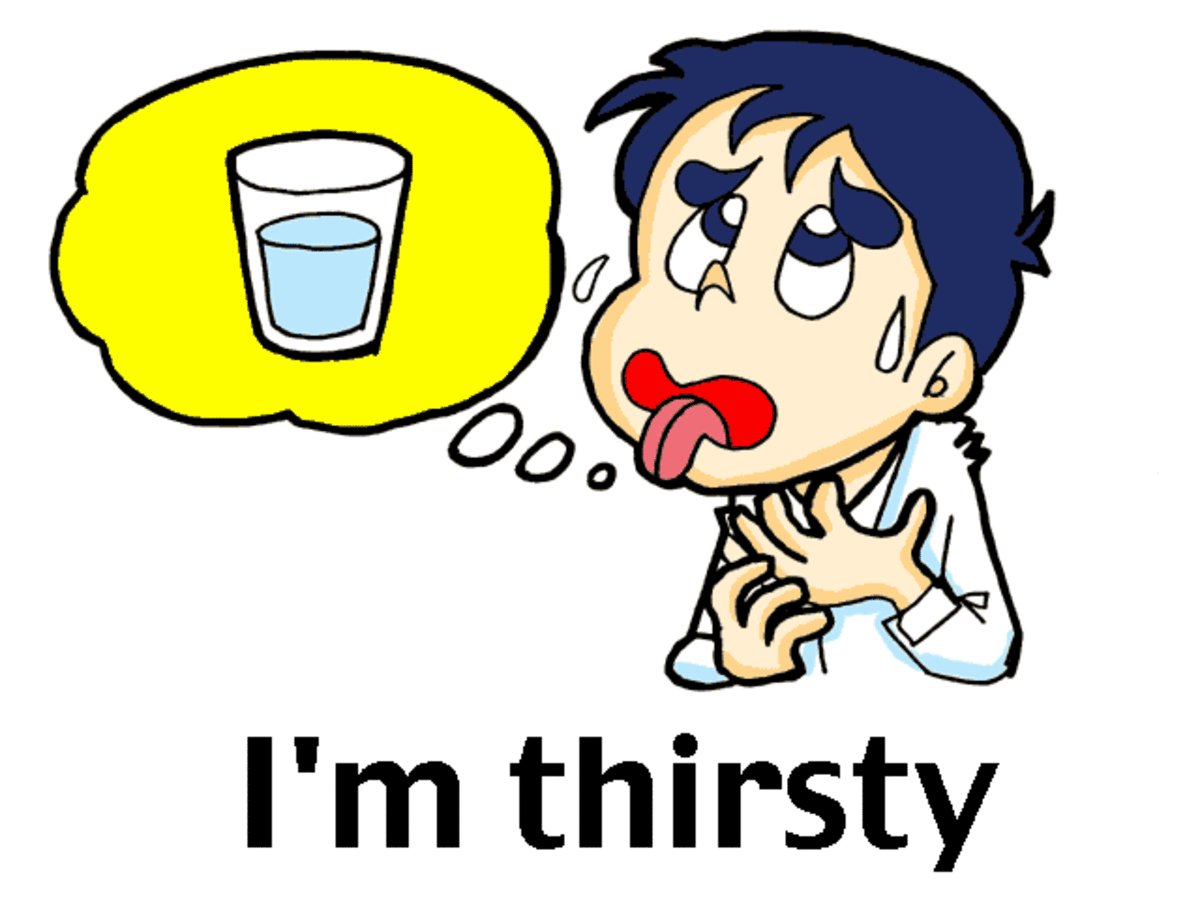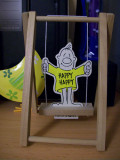Mood stabilizers: 8 things you should know about drugs for bipolar disorder

Introduction
“Mood-stabilizers” is a collective term for a group of drugs used in psychiatry to counteract mood-swings. Patients who experience alternating episodes of extreme elation and deep depression were originally said to be suffering from manic-depression, a relatively rare disorder afflicting about 10 people per million per year (1). Over the last 20 years or so people with abnormal variations in mood have typically been given the diagnosis of bipolar disorder, a term that incorporates a wider range of presentations. Indeed, the concept has recently been further broadened, some psychiatric researchers suggesting that up to 20% of the general population may display a “bipolar spectrum disorder.” (2)
As more and more people have become labelled as having pathological mood swings, the pharmaceutical industry has responded by marketing a range of medications claiming to rectify the disorder. As often happens in psychiatry, the commercial hype can triumph over the scientific evidence leading to overly ambitious claims for the efficacy of their products.
What follows are eight key pieces of information about mood-stabilizers that should be known by anyone considering the appropriateness of taking this group of drugs.
1. Mood-stabilizers comprise an assortment of different chemicals
Reflecting the lack of any known biochemical basis for mood disorders, the drugs advocated for the treatment for these types of emotional problems comprise a heterogeneous range of chemicals.
The hotchpotch of common medications prescribed for mood disorders are listed in Table 1, along with the drug-type from which each derives.
Lithium was the first mood-stabilizer and is currently the most widely used. Consequently, most of the subsequent points are in reference to this drug.
Medication
| Brand names
| Drug type
|
|---|---|---|
Lithium
| Priadel, Camcolit, Liskonum
| Alkaline metal
|
Sodium valporate
| Epilim, Depakote,Episenta
| Anti-epilepsy drug
|
Carbamazepine
| Tegretol, Carbagen
| Anti-epilepsy drug
|
Lamotrigine
| Lamictal
| Anti-epilepsy drug
|
Olanzepine
| Zyprexa
| Anti-psychotic drug
|
Quetiapine
| Seroquel
| Anti-psychotic drug
|
Aripiprazole
| Abilify
| Anti-psychotic drug
|
Table 1: Medications for mood disorders
2. Mood stabilisers do not normalise emotional responses
Contrary to psychiatric folk-lore, mood-stabilizers do not do what their name suggests; they do not normalise emotional responses. The mood-stabilizers do not act as an elegant buffer, keeping mood within standard parameters.
Research involving healthy volunteers taking lithium revealed that this most common of mood stabilizers did not reduce normal fluctuations in mood (3)(4).

3. Mood stabilizers are sedatives
All mood stabilisers (irrespective of whether their original category was alkaline metal, ant-epileptic or anti-psychotic) have a sedative effect, generally suppressing emotional reactions. In the context of manic-depression or bipolar disorder, the only established benefit of mood stabilisers is that they suppress mania. Given the hugely damaging consequences of a manic episode on a person’s life, preventing mania is often a highly desirable outcome. Nevertheless, the term “mood dampeners” more accurately describes the effect of this group of commonly used drugs.
The sedative effect of mood-stabilisers is most starkly illustrated when healthy volunteers ingest lithium (5)(6). Three weeks after starting the drug these volunteers show a decreased ability to learn new information, slower reaction times, reduced spontaneity and worsening memory.
4. Lithium was once used to treat gout
Lithium has been around for a long time. Throughout the 19th century, many years before it was promoted for use with manic-depression, lithium was believed to be an effective treatment of gout (a painful disorder involving inflammation of the joints) and kidney stones. Although ultimately found to be ineffective for these ailments, this early application meant that plentiful supplies of lithium were available in pharmacies in the mid 20th century when its utility in managing mood disorders was first explored.
5. The positive outcomes of the first trial of lithium were exaggerated
Positively distorting the findings of psychiatric drug trials is not a new phenomenon. In the 1940s, an Australian psychiatrist named John Cade began to experiment with the effects of lithium on patients with mental disorders. After observing the sedative effects lithium achieved with rats, he subsequently explored the outcomes for people experiencing mania and psychoses. In 1949 he reported extremely positive results for this group of psychiatric patients.
The availability of plentiful supplies of lithium within pharmacies across the western world, combined with the promotion of Cade’s astounding results, led to an exponential growth of lithium prescribing for the treatment of mania and other forms of psychotic agitation. Subsequently, however, it was discovered that Cade had “sexed-up” the results of his drug trial and had under-reported the toxic effects of lithium (1).
6. Mood stabilizers can cause a wide range of side effects
Lithium is a toxic metal. Consequently, when it is prescribed for the treatment of bipolar disorder it is imperative that the patient provides regular blood samples to ensure that the level in the body is maintained within a therapeutic range. Should the lithium concentration exceed the upper limit of this range, severe damage can be caused to the nervous system, gut and kidney.
The side-effects of lithium and the other mood stabilisers are given in the Table 2.
Drug
| Common side-effects
| Rare side effects
|
|---|---|---|
LITHIUM
| Hand tremor, reduced reaction times, excessive thirst, frequent urination, reduced creativity, underactive thyroid gland, weight gain
| Kidney damage,
|
SODIUM VALPORATE
| Nausea, lethargy, sedation, weight gain, polycystic ovaries, hair loss,
| Liver failure, blood disorders, foetal abnormalities (if taken early in pregnancy)
|
CARBAMEZAPINE
| Loss of balance, nausea, sedation, rash, double vision
| Blood disorders, liver failure
|
LAMOTRIGINE
| Lack of coordination, double vision, rash, vomiting
| Blood disorders, liver failure
|
OLANZEPINE/ QUETIAPINE/ ARIPIPRAZOLE
| Over-sedation, weight gain, sexual problems, raised cholesterol,
| Diabetes
|
Table 2: Side-effects of mood stabilizers
7. Lithium is no better than other sedatives in controlling mania
Contrary to popular opinion, lithium does not appear to have any specific advantage over other sedative drugs in controlling mania.
Three studies have compared lithium with the anti-psychotic drug chlorpromazine for patients with acute mania. In two of them chlorpromazine was superior (7)(8). Such findings are consistent with the premise that any benefits from taking lithium are not due to the medication rectifying a chemical imbalance in the brain responsible for mood swings, but due to a general tranquillising effect.
8. Stopping lithium can cause manic relapse
Within the psychiatric system, the most common reason for prescribing lithium is for the long-term treatment of manic depression. Many patients who have in the past suffered episodes of mania, alternating with periods of severe depression, take lithium over many years to prevent further manic experiences.
A number of drug-trials have suggested that lithium is superior to other medications in preventing manic-depressive relapse (1). Unfortunately, these studies do not take into account the effects of abruptly stopping lithium after taking it for a long time. Typically, these studies recruit a large number of patients who have suffered with manic-depression but who are now stable. Many of these patients will have been taking lithium (or another mood stabilizer) for many months, or even years. These patients are then randomly divided into two groups, A and B. Participants in Group A continue to take lithium, while those in Group B are switched to a placebo pill (that is a pill without any active chemical). So in effect many of patients in Group B will have had their lithium stopped abruptly. All patients are then followed up over the next six months to determine how many relapse. The typical finding of these studies is that more patients in Group B will have a manic relapse than do so in Group A.
Psychiatrists and the pharmaceutical industry usually interpret these results as supporting the premise that lithium is an effective long term treatment for preventing manic-depressive relapse. A radically different, but equally logical, explanation of these research findings is that those patients in Group B who have a further episode of mania do so due to withdrawal effects from abruptly discontinuing the lithium.
Further evidence suggests that the risk of having a manic relapse after stopping long-term lithium treatment is even higher than it is prior to starting on lithium (9).
References
(1) Moncrieff, J. (2009). A Straight Talking Introduction to Psychiatric Drugs (Eds. R. Bentall & P. Sanders). PCCS Books, Ross-on-Wye.
(2) Angst, J. et al. (2003). Toward a redefinition of sub-threshold bipolarity. Journal of Affective Disorders 73 (1-2), 133-146.
(3) Barton, C.D. et al. (1993). Mood variability in normal subjects on lithium. Biological Psychiatry 34 (12), 878-884.
(4) Calil, H.M. et al. (1990). The effects of lithium carbonate on healthy volunteers: Mood stabilization? Biological Psychiatry 27(7), 711-722.
(5) Judd, L.L. et al. (1977). The effects of lithium carbonate on the cognitive functions of normal subjects. Archive of General Psychiatry 34(3), 355-357.
(6) Muller-Oerlinghausen et al. (1979). Effects of lithium on vigilance, psychomotoric performance and mood. Pharmakopsychiatric Neuropsychopharmakol. 12(5), 388-396.
(7) Prien, R.F. et al. (1972). Comparison of lithium carbonate and chlorpromazine in the treatment of mania. Archives of General Psychiatry 26(2), 146 – 153.
(8) Braden, W. et al. (1982). Lithium and chlorpromazine in psychotic inpatients. Psychiatry Research 7(1), 69 – 81.
(9) Suppes, T. et al. (1991). Risk of recurrence following discontinuation of lithium treatment in bipolar disorder. Archives of General Psychiatry 48(12), 1082 – 1088.









